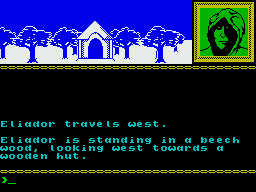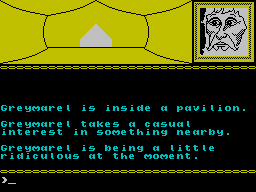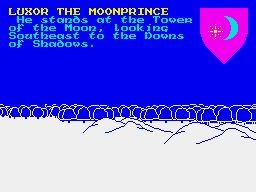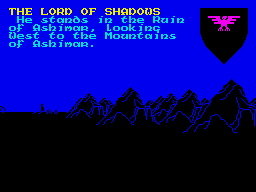Golly, that’s a hard question to answer. I bought my first computer in 1981 (an Atari 800). I was already familiar with adventures from reading magazines like Creative Computing, so I bought Scott Adams’ ‘Adventureland’ on cassette. It took 15 minutes to load, so I didn’t turn the computer off until I’d solved it. As I live in Australia, it was very hard to find any software at all. I bought a few more Scott Adams’ games and got a disk drive shortly after that. Once I got a disk drive, I just bought every adventure I could get my hands on, mostly imported from the US. I also typed in adventures from books and magazines and ported adventures from other computers to the Atari. Most adventures were written in BASIC in those days, so it was pretty easy to port them. I even ported a couple to a Cyber mainframe at work. (I might have done that before I got the Atari.) The Atari had some really good illustrated adventures, mainly ported from the Apple II.
I formed an Atari users’ group in 1982, formed an Adventure Special Interest Group within that and edited its newsletter called Inside Info. We used to exchange newsletters with other user groups. As a result of that, I got quite quite friendly with Les Ellingham, the editor of Page 6 in the UK. I started writing a regular adventure column for Page 6 and won a prize for most popular article (for an arcade game, not anything adventure related). The prize was all the Brian Howarth adventures on cassette.
So, to answer your original question: anything from Scott Adams and Brian Howarth, type-ins from books (The Captain 80 Book of BASIC Adventures was one of my favourites), type-ins from computer magazines (SoftSide, Antic, A.N.A.L.O.G., Computer & Video Games, Page 6 et al), illustrated adventures from companies like Brøderbund, DataSoft, Sierra Online (the early ones up to ‘The Dark Crystal’, not the later ones) and so on.
My favourite was probably the SoftSide ‘Adventure of the Month’ series. This was a subscription service that sent you one adventure every month until it morphed into a bonus on the disk issue. There were 30 adventures in all for the Atari, Apple II and TRS-80. All top notch games. The most prolific of the authors was Peter Kirsch. His games got more and more sophisticated as time went on. They are still some of my most memorable games.
If you’re interested in my articles for Page 6, see https://www.page6.org/ and search for my name. I wrote about 20 adventure columns, mostly doing a major review of one or more commercial games, including playing strategy and coded hints. These will give you a flavour of what I was playing at the time. The major games I covered were (in alphabetical order) Blade of Blackpoole, Dragon Quest, Gruds in Space, Gunslinger, Lapis Philosophorum, Mask of the Sun, Mindshadow, Mission: Asteroid, Powerstar, Original Adventure, Rick Hanson, Sands of Egypt, Stonequest, Stranded, The Golden Baton, The Hitchhiker’s Guide to the Galaxy, The Neverending Story, The Pawn, Transylvania, Wombats I, Zork I and a lot of smaller coverage, hints etc. for many other games.
Many happy memories and many great games amongst that list. I think all are available for emulators.
 even though we agree on a lot of things.
even though we agree on a lot of things.




